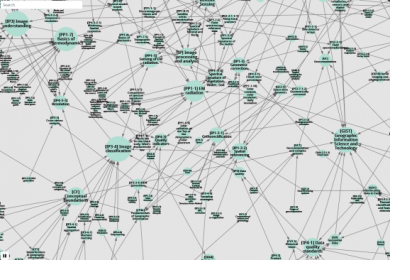The EO4GEO project, an alliance of 26 partners from 13 European Union countries, has publicly released a Body of Knowledge (BoK) for the Earth Observation (EO) and Geographic Information (GI) domain. The BoK is a formal description of the EO/GI sector represented by a complete set of interrelated concepts. It consists of 907 concepts, 1129 relationships between them, and 1875 skills to which the concepts related. While previous versions of the BoK had limited access, the latest version is available publicly.
As an explicit vocabulary covering the domain, the BoK offers a reference point for education and industry, allowing them to reflect on educational material, training offers and business processes so as to guide their education and work practice, and bridge the skills gap between the supply of and demand for education and training in this domain. As a common shared vocabulary, it also enables the communication between and integration of software applications.
Using the Living Textbook tool, the EO4GEO BoK is open to all experts who want to contribute to its content. The content of the Living Textbook is released on a regular basis, and the Living Textbook tool provides a graphical overview of all the concepts and their connections. Each concept contains a short description, information about external resources, and details about who is contributing to this concept. It also includes a list of skills, which indicate the relevant knowledge and know-how to complete tasks and solve problems.
To explore the EO4GEO BoK through the Living Textbook tool, click here.
Another entry path is the Bok Visualization and Search tool, which provides a more compact view of the BoK by organizing concepts hierarchically as super- and subconcepts rather than in a network format.
The EO4GEO BoK, designed with compatibility and interoperability in mind, can be accessed through a variety of web interfaces and protocols, and therefore integrates easily with other applications, which can re-use the information. A number of related applications are available on the EO4GEO project website.
The project consortium foresees a number of use cases such as:
A teacher uses the Body of Knowledge to explain one or more of its concepts to students in a course.
An expert in Earth Observation contributes the essentials of a new technology to the concepts in the Body of Knowledge.
A web developer wants to create an application that allows users to view the content of the Body of Knowledge in a specific way or context.
The EO4GEO BoK is updated regularly, with all concepts under development in seven working groups. Over 20 per cent of concepts have been completed so far.
A video is providing further information about the EO4GEO Body of Knowledge.

